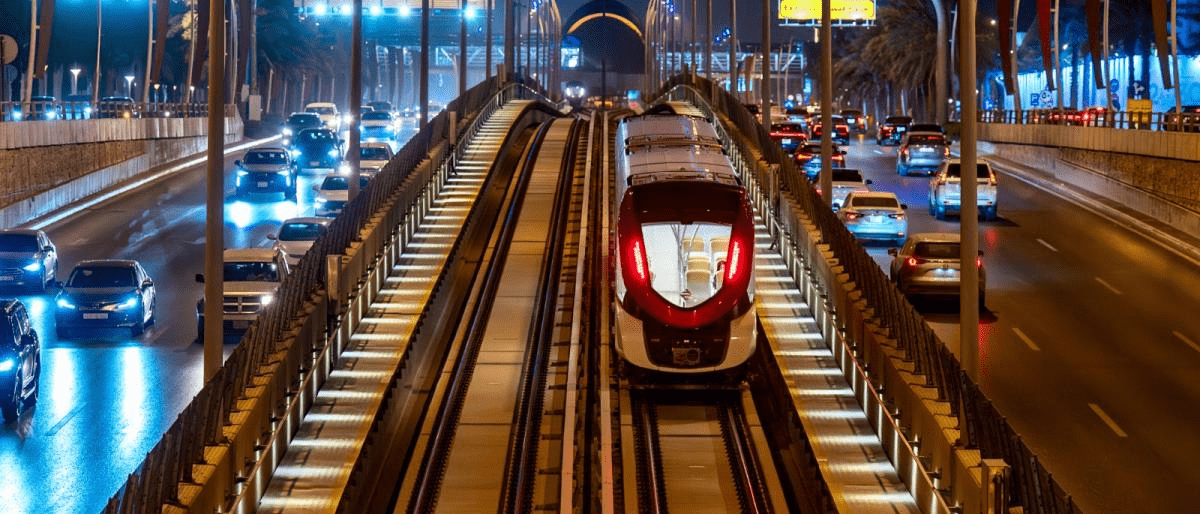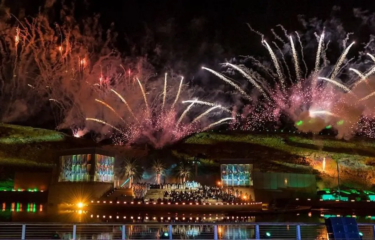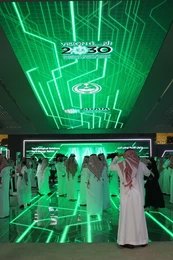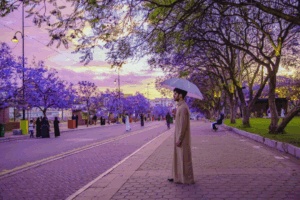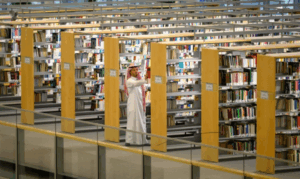The Royal Commission for Riyadh City has opened three new stations on the Orange Line of the Riyadh Metro: Al Malaz, Al Rajhi Grand Mosque, and Khashm Al Aan. These additions are part of the ongoing rollout of one of the largest public transport systems in the Middle East, supporting both local commuting and Saudi Arabia’s broader Vision 2030 goals. The new stations are already welcoming passengers and improving access across the capital.
A Quick Overview of the Riyadh Metro
The Riyadh Metro is a massive infrastructure project designed to meet the city’s growing mobility needs. Spanning 176 kilometers with six distinct lines and 85 stations, the metro is designed to cut down traffic, reduce carbon emissions, and offer a more sustainable way to move around the city. The Orange Line, also known as Line 3, is the longest, stretching across 41 kilometers from the west to the east of Riyadh.
It connects major commercial and residential districts while linking up with other metro lines for smoother travel. The Orange Line originally launched with five stations in early 2025. These new openings mark the second phase of the rollout, making the system more accessible to people across different areas of the city.
What’s New on the Orange Line
Al Malaz Station:
Al Malaz Station sits in a central and historic district of Riyadh. The area is home to the Prince Faisal bin Fahd Stadium, the horse race track, and the National Museum. This station makes it easier for locals and tourists to explore cultural spots, attend events, and reach government buildings.
Al Rajhi Grand Mosque Station:
Al Rajhi Station now serves one of the most important religious sites in Riyadh. The station brings better access for worshippers, especially during peak times like Friday prayers and Ramadan. It also supports nearby businesses and residential communities.
Khashm Al Aan Station:
This station is located at the eastern end of the Orange Line. It serves industrial zones and neighborhoods that were previously underserved by public transport. With this station now active, workers and residents have a faster way to connect to the rest of the city.
How to Use the Riyadh Metro
The Riyadh Metro runs daily from 6:00 AM to midnight. Trains arrive frequently, and the system is designed to handle millions of passengers each day.
You can use the Darb mobile app to plan your journey, buy tickets, and check schedules. Tickets are also available at station kiosks or ticket counters. Payments can be made through bank cards, mobile wallets, or smartwatches.
Standard Class Tickets:
- 2-hour pass: SAR 4
- 3-day pass: SAR 20
- 7-day pass: SAR 40
- Monthly pass: SAR 140
First-Class Tickets:
- 2-hour pass: SAR 10
- 3-day pass: SAR 50
- 7-day pass: SAR 100
- Monthly pass: SAR 350
The metro includes designated areas for women, families, and individuals with disabilities.
Why This Expansion Matters
These new stations improve the daily lives of thousands of people. The system now connects more neighborhoods, reduces the need for private cars, and helps lower traffic congestion. It also improves air quality by cutting carbon emissions. Estimates suggest the Riyadh Metro could reduce emissions by 400,000 tons each year.
Property values are already rising near metro stations. Businesses near the new stops are seeing more foot traffic. This expansion is also helping people save on transportation costs, offering a reliable alternative to rideshare services.
Looking Ahead
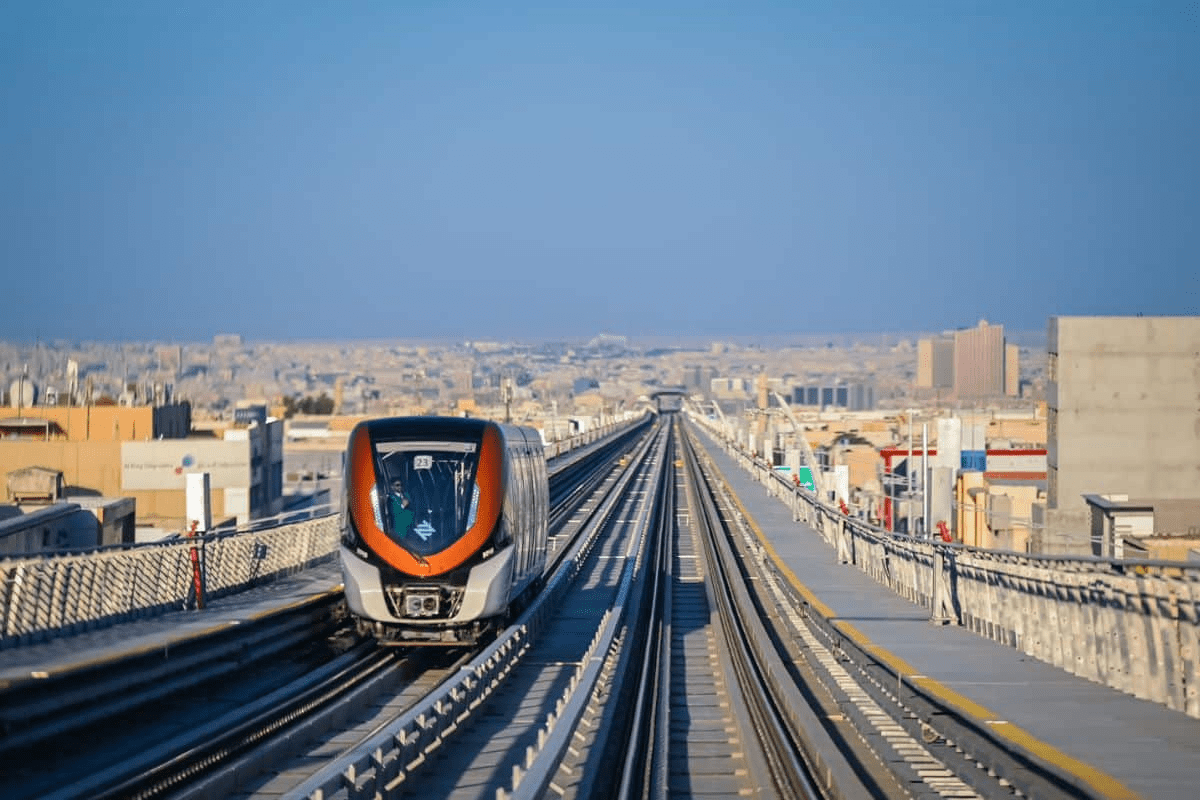
The Riyadh Metro will continue expanding. A seventh metro line is already in the planning phase, aiming to connect future mega projects like Qiddiya, King Salman Park, and Diriyah Gate. The Orange Line itself will add more stations, creating even more links across the city.
The metro system is just one part of Riyadh’s broader public transport network, which also includes over 80 bus routes and on-demand services. All these systems are integrated through the Darb app, making it easier for users to get around efficiently.
With the launch of Al Malaz, Al Rajhi Grand Mosque, and Khashm Al Aan stations, the Riyadh Metro is proving its value as a key part of daily life in the city. The Orange Line now connects more communities, landmarks, and job centers, offering a cleaner and faster way to get around.
As more stations open and the network grows, the metro is reshaping how people move across Riyadh, making commutes simpler, travel more affordable, and the city more connected than ever.
FAQs
What are the three new stations on the Riyadh Metro Orange Line?
Riyadh Metro opens three stations on Orange Line. The newly opened stations are Al Malaz, Al Rajhi Grand Mosque, and Khashm Al Aan. They provide better access to key areas like the National Museum, religious sites, and eastern industrial zones.
What areas does the Orange Line in Riyadh connect?
The Orange Line runs from Jeddah Road in the west to Khashm Al Aan in the east, covering important commercial, residential, and cultural zones across the city.
What time does the Riyadh Metro operate?
The metro runs daily from 6:00 AM to 12:00 midnight, with frequent trains serving commuters and travelers across all six lines.
How much do tickets cost for the Riyadh Metro?
Standard tickets start at SAR 4 for a two-hour pass, while monthly passes cost SAR 140. First-class options are also available.
How can I buy tickets for the Riyadh Metro?
You can buy tickets through the Darb mobile app, station ticket offices, self-service kiosks, or use contactless payments like bank cards or mobile wallets.

